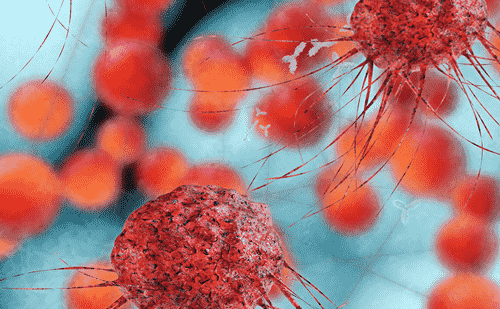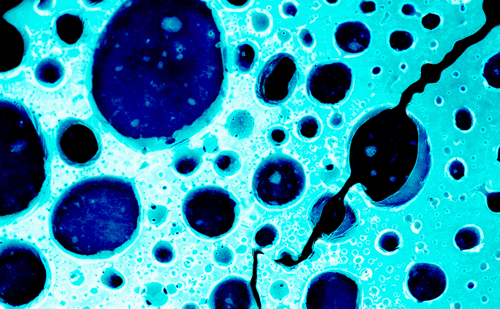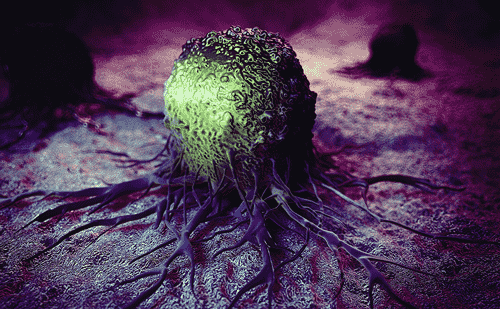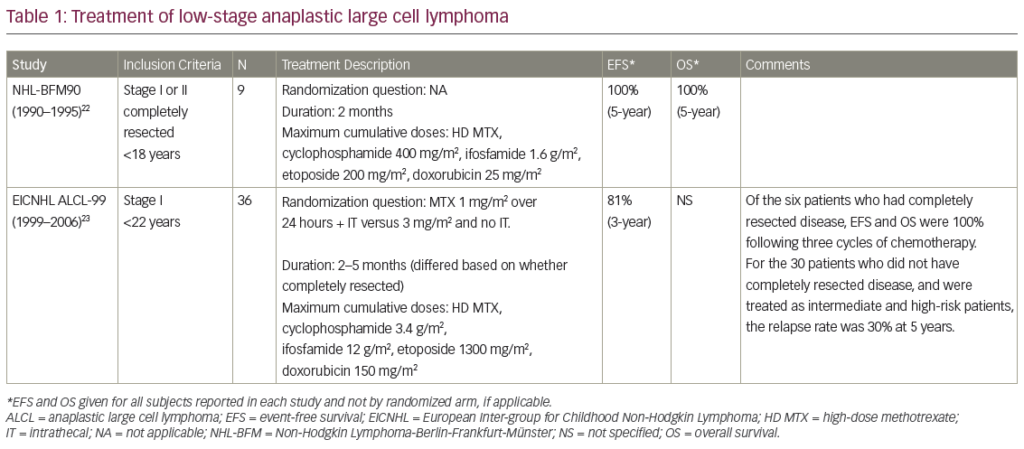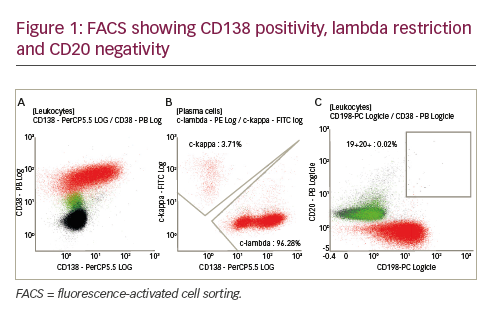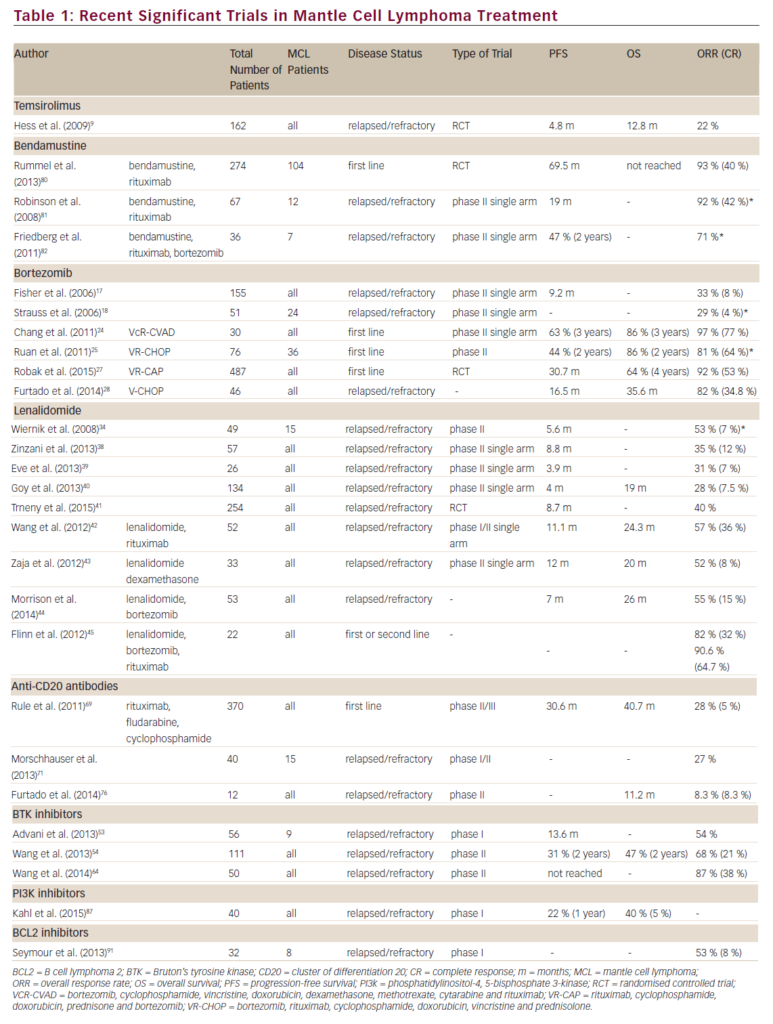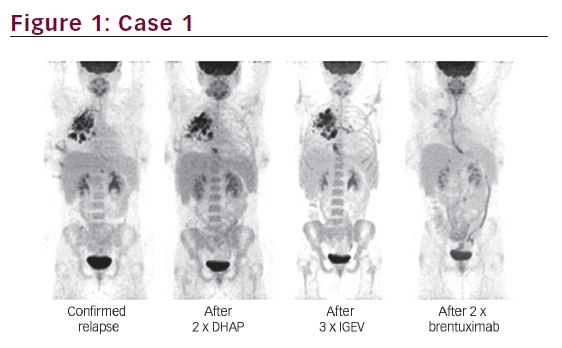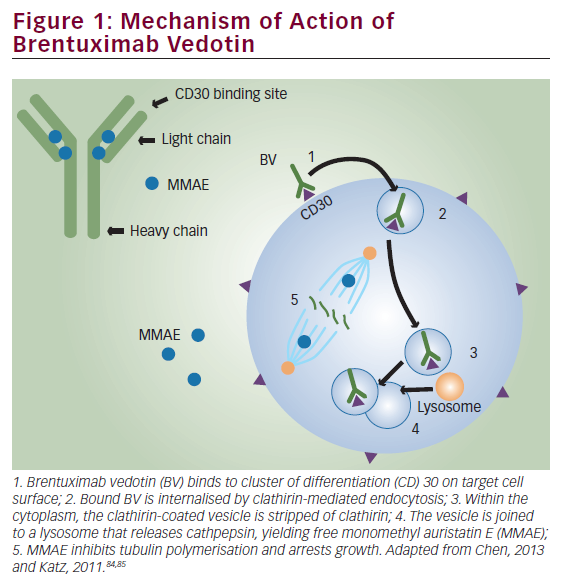Treatment Options
Follicular lymphoma is not curable with conventional chemotherapy alone, although initiating treatment provides very good early results with partial or even complete remission. The natural course of follicular lymphoma is characterised by spontaneous regressions in up to one-fifth of cases. Very aggressive treatments, such as myeloablative bone marrow transplantation, might cure some patients but these are often not available for the majority.
According to the European Society for Medical Oncology (ESMO), standard first-line treatment for patients with symptomatic follicular lymphoma is chemotherapy.2 Primary chemotherapy includes combination regimens such as COP (cyclophosphamide, vincristine and prednisone) and CHOP (cyclophosphamide, doxorubicin, vincristine and prednisone) or single agents such as fludarabine or chlorambucil. The addition of anti-CD20 antibodies, primarily rituximab, to initial chemotherapy has improved response rate, duration of response, progression-free survival and overall survival, as shown in large randomised trials (see Table 1).3–5 Nevertheless, patients tend to relapse, albeit later and less frequently, but still with a continous relapse pattern.
Treating Relapsed and Refractory Patients
For late relapses of follicular lymphoma, revisiting the primary treatment options is often successful in achieving remission. Furthermore, the use of targeted monoclonal antibody therapy with rituximab has shown considerable single-agent activity, even after failed transplantation, and may be combined with conventional or high-dose salvage chemotherapy.
There have been two randomised prospective trials of concurrent rituximab and chemotherapy followed by sequential rituximab maintenance therapy. In one trial, the German Low-grade Lymphoma Study Group (GSLG) treated patients with fludarabine, cyclophosphamide and mitoxantrone (FCM) plus rituximab, and then randomised responsive patients to observation or fourweekly applications of rituximab at months three and nine. Results showed that the median response duration had not yet been reached for patients on rituximab maintenance, whereas it was roughly 26 months for patients on observation (p=0.035).6 Almost identical results were obtained by the European Organisation for Research and Treatment of Cancer (EORTC) 20,981 study group.7 Patients were randomised to CHOP with or without rituximab; those responding to treatment were randomised a second time to observation or to a oneweek course of rituximab maintenance every three months for up to two years. The latter group had median progression-free survival of 51.9 months versus 23.1 months for those on observation (p<0.0001). In both studies, there was a borderline trend towards improved overall survival after only a short follow-up period (p=0.056 and p=0.011, respectively). Taken together, these two studies strongly suggest clinical benefit for maintenance rituximab in relapsed follicular lymphoma.
CVP = cyclophosphamide, vincristine and prednisone; R = rituximab; CHOP = cyclophosphamide, doxorubicin, vincristine and prednisone; MCP = mitoxantrone, chlorambucil and prednisone
A New Hope
However, there is still a high risk of relapsing and there are cases of patients becoming refractory to rituximab. A new offering is radioimmunotherapy, which has excellent tolerability owing to its specific mechanism of action. Follicular lymphoma is inherently radiosensitive, and elderly and younger patients both equally benefit, so the development of radioimmunotherapy is a significant advance.
Radioimmunotherapy involves the delivery of cytotoxic doses of radiation to all sites of disseminated disease via targeted antibodies to the CD20 marker. There are currently two agents available: iodine-131- labelled tositumomab (Bexxar™) and yttrium-90- labelled ibritumomab tiuxetan (Zevalin™). While there may be some differences between these isotopes in terms of different path lengths and different kinds of radiation, clinical results are remarkably similar. In phase III clinical trials, both agents have produced high response rates in patients with relapsed or refractory follicular lymphoma. With Zevalin, the radioisotope 90yttrium (90Y) – a pure beta emitter – is linked to the monoclonal anti-CD20 antibody ibritumomab by the chelator tiuxetan. The 5mm range of the 90Y beta rays will destroy both the bound cell and unmarked cells in the immediate area (cross-fire effect) with no clinically relevant third-party radiation exposure, which means that radioimmunotherapy can be used in an out-patient setting (provided that legal regulations for radiation protection are followed.)8 The main side effect of radioimmunotherapy, which often appears four to eight weeks after treatment, is a reversible and predictable haemototoxicity.9 This is clinically manageable in most cases; severe non-haematological toxicities have not been generally observed.
In a randomised comparison with rituximab, radioim-munotherapy with 90Y-ibritumomab led to statistically significant higher response rates and particularly higher rates of complete response than the immunotherapy alone.10 Progression-free survival was comparable in both study arms; however, a subgroup analysis of patients achieving a complete or unconfirmed remission after radioimmunotherapy demonstrated a remarkably longer progression-free survival.11
There is also evidence that earlier initiation of radioimmunotherapy gives better results. Pooling the data from the long-term responders from four registration studies with 90Y-ibritumomab reveals an increasing complete response rate with decreasing numbers of prior therapies (see Table 2).12 Follicular lymphoma patients with only one previous therapy had a higher response rate after radioimmunotherapy than those with two or more, and the rate of complete response was markedly higher in those patients receiving radioimmunotherapy at first relapse. The higher response rates and better remission quality resulted in a significantly longer duration of remission and prolonged progression-free survival. Based on these data, currently, a randomised European intergroup trial (RitZ) is being activated which evaluates the impact of radioimmunotherapy consolidation after initial salvage chemotherapy.
Iodine-131 (131I) has beta and gamma emissions, and as such as requires efficient radioprotection; however, its clinical efficacy appears to be comparable to 90Y. In one study of 76 patients with late-stage follicular lymphoma, 131I tositumomab achieved a striking 95% response rate, with 75% achieving complete response.13 Five-year progression-free survival rate was around 59% and median progression-free survival was 6.1 years. About 70% of the patients who attained a complete response remained in remission for 4.3–7.7 years. Similarly, in a phase II trial of 90 patient with advanced stage follicular lymphoma, Zevalin consolidation after six cycles of CHOP resulted in an impressive 67% progression-free survival rate after FIVE years.14
Conclusion
After three decades of little change in treatment options for follicular lymphoma the advance of monoclonal antibody therapies targeted specifically at the CD20 antigen has given new hope for sufferers. Further improvement is being expected with the advent of new radiolabelled isotope antibodies, and there is hope that this can be extended to treatment-naïve patients as well. However, more studies need to be undertaken before the old watch and wait paradigm of care really can be discarded.


